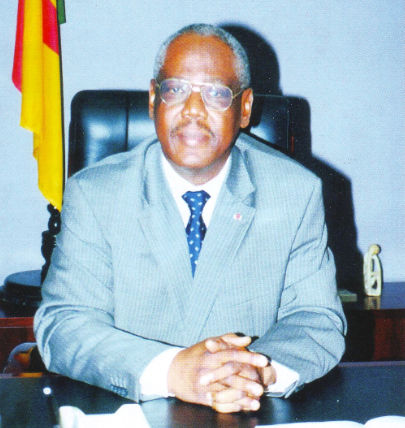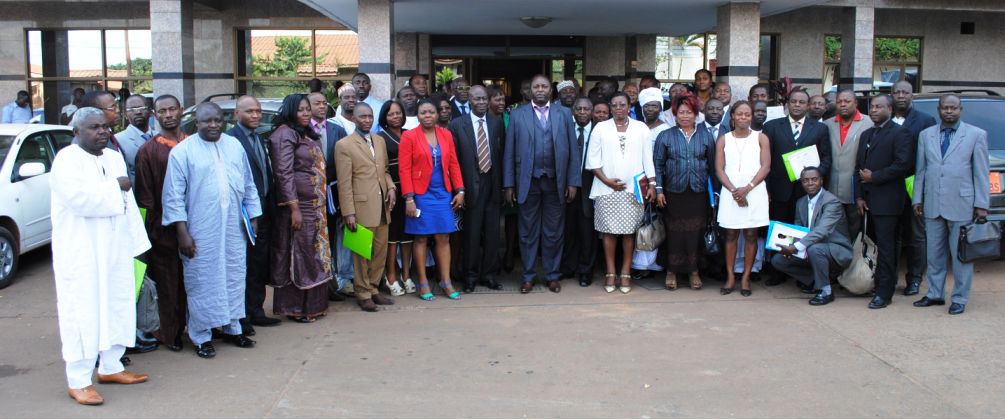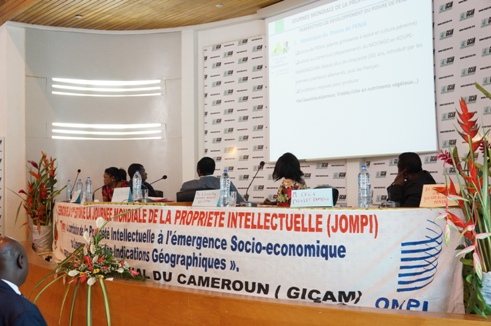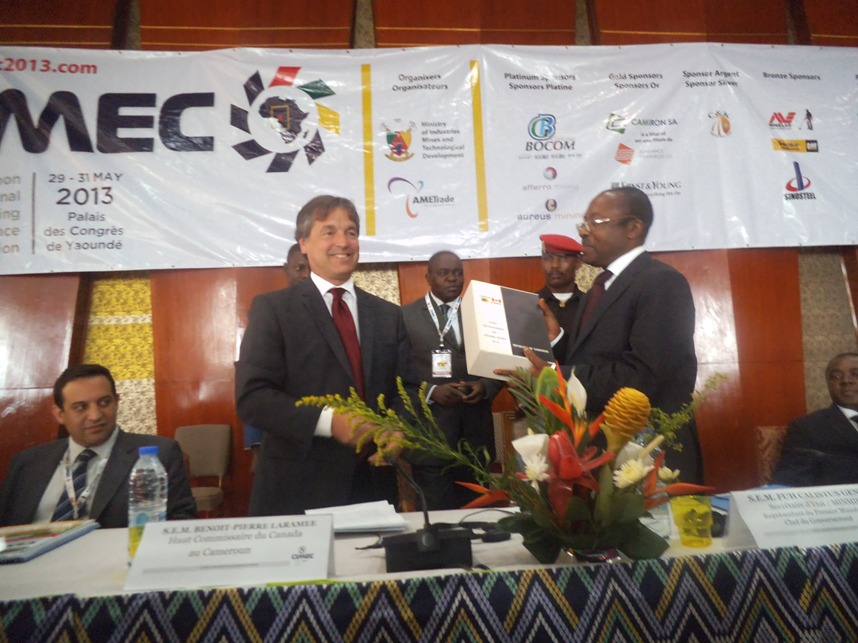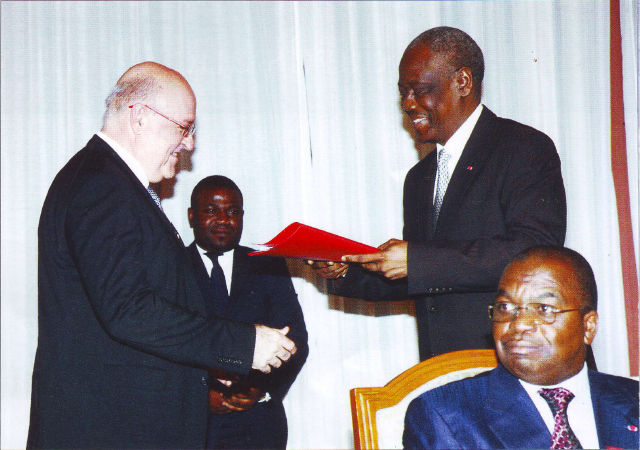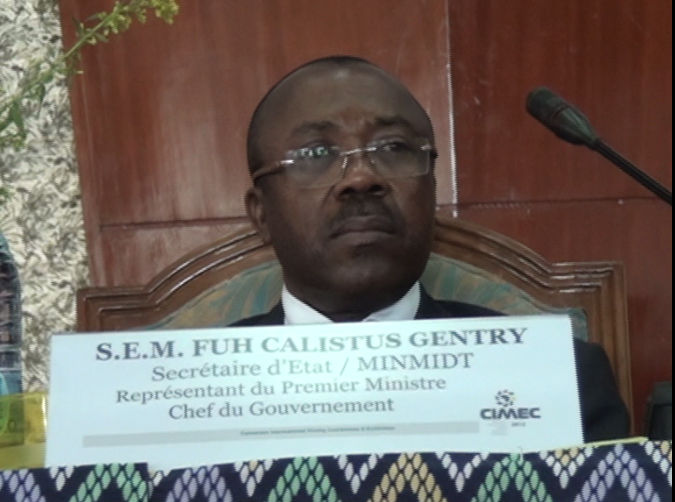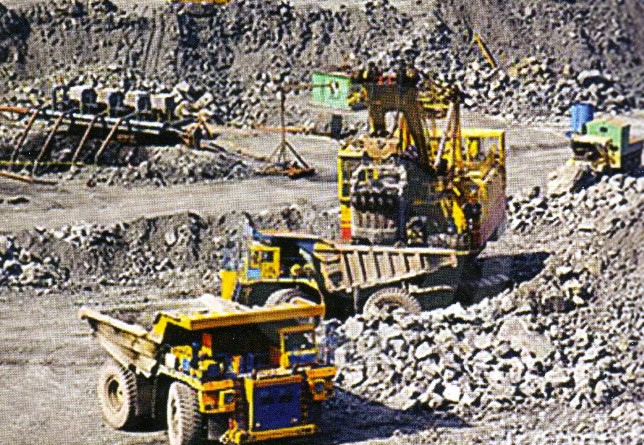MINISTRY OF MINES, INDUSTRY AND
TECHNOLOGICAL DEVELOPMENT
Headquaters:
Ministerial building (immeuble rose) - Yaounde
Tel : +237 681 129 081
E-mail : [email protected]
The news
Diary and ServicesDocuments-DownloadsMultimediaUseful LinksVisites count1966332
Today Yesterday This Week Last Week This Month Last Month All days 3663 4056 10561 1924620 81528 122926 1966332 Guest on lineWe have 42 guests and no members online |
Mining RegisterThe concept of “land register” is as old as that of “Private property”. In fact, it was created because of the need to register documentary deeds for the following purposes: 1-The creation of the State charging Units 2- Security for license holders: it was necessary to avoid duplication of property, that is, more than one owner for the same property. These two principles are still valid nowadays. The mining registry refers to: - The intermediary between the administration and holders of license for all issues concerning mining rights. - The structure in charge of transparency as concerns the issuance mining rights the guarantor and security of mining rights - The service in charge of collecting superficiary tax and rent. The modern concept of “Mining Register” refers to the whole of registers, records, documents, maps and procedures related to applications and issuance of mining titles. Cadastre goes beyond graphic data. In the Cameroun legislation, · The concept “mining land register” is not mentioned · The “Registrar of mining titles” carries out activities concerning land register operations. · The Registrar: a senior official of the public administration, in charge of mines and geology; responsible for establishing and keeping of the register called “ Register of Mining Titles”; Various mining titles: 1. Artisan mining License 2. Exploration permit 3. Prospecting license 4. Operating license Geophysical and geographical data The President of the Republic wants to give impetus to the dynamic development of the mining extractive industry through a challenging policy by developing strategies aiming at paving the way to a competitive, solid, efficient mining sector , and profitable in terms of goods and value, throughout the world. This vision of the Head of State is supported by the significant quantity of Cameroun’s mineral potential. The information about the ground and the underground are said to be known at about 40%. It is important to notice that this mineral potential will be even more significant when prospection works that will cover a larger area of the country. Because they generate wealth and value, the projects in the mining domain bring much hope and are de facto major projects which will surely stimulate economic growth in order to make Cameroon an emerging country by the year 2035. In fact, every mining project is a source of direct or indirect income for the State. Direct incomes concern various taxes such as corporate tax, license fees, VAT, superficiary tax ad valorem and custom taxes etc. Indirect incomes are mainly derived from the from the fact that the State is entitled to have shares in mining companies to a maximum of 10% . Moreover, services related to operation in terms of supply of spare parts and various works, also provide incomes related to charges for the said services. The cumulated amount of the various incomes is a significant increase in the State’s foreseeable incomes . The development of the extractive industry in Cameroon depends on a strong policy established for the realization of the aforementioned projects. The reform of the mining sector, instituted by the Ministry of Water Resources and Energy, with the collaboration of the World Bank, led to the enactment of the mining law : N° 001 of 16th April 2001 and Decree N° 2002/648 PM of 26th March 2002 specifying the conditions of its implementation . This law was recently modified and completed by the law N° 2010/011 of 29thJuly 2010. This regulatory framework, which provides exceptional incentives and is an outstandingly adequate tool for the promotion of our mineral resources, has helped to attract investment in the sector of mines, considered as “solid”. OVERVIEW ON CAMEROON MINERAL POTENTIAL with regard to the geological aspect of Cameroon, five great geotectonic units can be observed, including: craton, craton cover, Panafrican range, sedimentary basins, and the volcanic cover). All these units are conducive to the formation of many mineral resources which are necessary for mining activities. In general, Cameroun’s potential in terms of hydrocarbons is proven but limited, and made up of: - One billion one hundred and sixty millions tonnes of bauxite, - Two hundred billion cubic metres of natural gas, - several Million tonnes of iron -Two hundred and fifty thousand tonnes of cassiterite, -Three million tonnes of rutile, Many tonnes of iron and diamond, -More than six million tonnes of limestone and marble, -important reserves of pozzolan, siliceous sand, salt, clay, nephelitic syenite, pink granite, mineral water. - Many other mineral substances have been discovered recently; there are: sapphire, corundum, titan, disthene, lignite, bituminous schist, uranium, cobalt and nickel, molybdenum, manganese, zircon, rare earths, construction metals, hot springs. Among thirty substances discovered, -9 (nine) are industrially exploited, such as petroleum, natural gas, bauxite, iron, rutile, nickel-cobalt-manganese, diamonds, mineral waters, building materials, (limestone, pozzolan, marble, stone, clay, sand,…); -At present, 4 (four) are exploited at industrial scale. There include: petroleum, building materials, diamond, mineral and spring waters; -3 (three) are currently exploited at artisan mining scale. These include: gold, diamond and sapphire; -2 (two) are currently being exploited under an operating license for solid mine; these include: a) nickel-cobalt-manganese of Lomie by GEOVIC CAMEROON S.A. ; b) Mobilong diamond, by the Cameroon and Korea mining Incorporation Company(C&K Mining); -2 (two) are to be exploited very soon: Mbalam iron by Cam Iron Company which recently signed an agreement with government; Minim-Martap and Ngaoundal bauxite, by the company Cameroon alumina whose agreement will also be signed very soon. To this day, other substances can be considered either as minerals found with main substances such as: lead, copper, zinc, barium, arsenic, graphite, zircon, or as geochemical concentration anomalies: gold, barium, rare earths, lead, zinc, chrome. They can also be considered as primary and alluvial mineralization indices ( lignite, bituminous schists, zircon, rare earths, molybdenum, tungsten). Available data about ground and underground resources is estimated at about 40%. It is worth bearing in mind that this potential will be even more significant when exploratory works covering a larger area of the territory will be available.
|
Copyright 2013. All rights reserved. Designed, managed and moderated by CITYEYE



